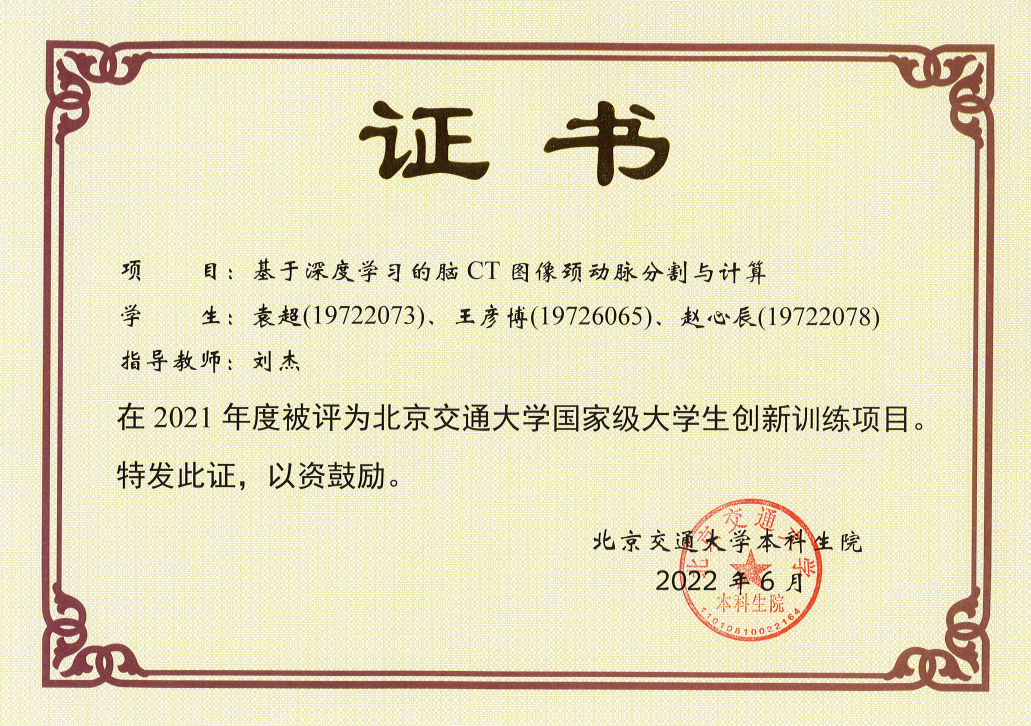Project Background
Cerebrovascular diseases pose a significant threat to human life and safety. However, the small size of carotid artery targets often hinders accurate diagnosis by doctors. Vessel segmentation presents considerable challenges, such as the high requirement for segmentation completeness, where reconstruction errors can affect medical decisions; the presence of image noise, with unrelated tissues sharing similar grayscale values to vessels; the high morphological complexity of vessels, making it difficult to infer vessel shapes using prior knowledge; and the difficulty in annotation, limiting the availability of large training datasets. This project aims to optimize the Unet network algorithm by integrating existing technologies to segment and reconstruct clear vessel images, helping doctors better understand patients' carotid artery conditions and make timely and accurate diagnoses.
Project Process
1.Developed a CTA image viewer to enable three-view visualization of CT images and achieved 3D vessel and bone reconstruction based on VTK.
2.Innovated traditional image segmentation methods by implementing a 2D longitudinal extension algorithm, which is faster, better at distinguishing and capturing details, and significantly improves segmentation accuracy.
3.Created and improved a deep learning semantic segmentation model based on Att-Unet to rapidly segment carotid arteries and vascular plaques.
4.Built a manual annotation system to support manual editing of segmentation results, enhancing project flexibility.
5.Implemented intelligent processing and analysis of segmentation results to generate diagnostic reports.
Project Innovations
Deep Learning Aspect:Innovatively integrated LSTM into the skip connections of Unet and added attention modules and multi-scale dilated convolutions, enabling better capture of image channel information and finer details. The model achieved 91.92% (Dice) on the GlaS dataset and 81.8% (Dice) on the MoNuSeg dataset, outperforming state-of-the-art models in medical image segmentation such as Unet (2015), Attention Unet (2018), UCTransNet (2021), and Medical Transformer (2021).
Traditional Algorithm Aspect:Optimized the traditional 3D region-growing algorithm and implemented a 2D longitudinal extension segmentation algorithm.
Project Outcomes
Developed a CT cerebrovascular medical image processing and diagnostic assistance software based on the latest deep learning algorithms. The software segments vessel images, visualizes them in 3D, and calculates vascular functional indicators, thereby assisting doctors in diagnosing cerebrovascular diseases. This enables earlier detection of cerebrovascular diseases and improves diagnostic and treatment standards. Additionally, a paper was written and published in SCI&CCFC journals, highlighting the superiority of our deep learning model.


